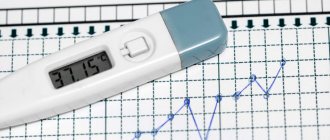During menstruation, almost all clinical blood parameters change. Sharp fluctuations are possible both downward and upward. ESR during menstruation is no exception. Its level is affected by the age, physique, and health status of the patients. The erythrocyte sedimentation rate in a person can be different even in the morning and evening hours of the same day. Critical days are not the best time to conduct research. The result obtained at this time cannot be objective due to the specific physiological processes in the female body.
Normal ESR in women during menstruation
Human blood is a heterogeneous substance. It is a suspension of a liquid medium - plasma, in which red cells - erythrocytes - are suspended. They give the blood its characteristic scarlet color. The tasks of red blood cells include transporting oxygen, nutrients and vitamins to body tissues and transporting carbon dioxide. In a dynamic state, red bodies have a negative electrical charge, repel each other and are evenly distributed in the liquid. In addition to red blood cells, plasma contains immune cells - leukocytes, and bodies responsible for clotting - platelets.
The quantitative level of all blood components and a number of specific reactions reflect the general physical condition of the body and indicate probable pathological processes in it. A general blood test is the first test that is prescribed during a preventive examination and in case of most ailments that arise. The content of leukocytes, hemoglobin and red blood cells is affected by inflammatory, autoimmune reactions, hormonal changes and oncological processes.
To measure ESR, a blood sample is placed in a glass tube with markings on the walls. Under the influence of gravity, the blood cells rush down, after some time a layer of red blood cells collects at the bottom of the test tube, and transparent plasma remains at the top. The unit of measurement is the number of millimeters per hour: mm/h.
The ESR norm in women has a fairly wide range, varying from 2 to 20 mm/h. Men's numbers are slightly lower: from 1 to 10 mm/h.
Taking a blood test during your period: pros and cons
A general or biochemical blood test or some other test must be taken periodically. This is necessary in order to keep all blood parameters under control.
Most often, the number of red blood cells, platelets and leukocytes is monitored.
Plasma, which also contains a very large number of indicators important for the body’s vital functions, also comes under control.
Before taking a blood test, you need to remember some existing warnings or even prohibitions. In this article we will talk directly about examination during menstruation.
At this time, the body itself experiences significant discomfort and one might even say shock. Some indicators rise and fall, and naturally the blood test will no longer show reliable information.
There is no special prohibition on undergoing this procedure, it’s just that the permissible limits will be slightly different.
What affects the ESR indicator in the body
The ESR indicator is not unambiguous. Based on its changes, it is impossible to say with certain accuracy about the presence of pathology in the body, and a normal level does not always turn out to be a sign of well-being. To obtain an objective picture of the state of health, it is necessary to record not only the movement of red blood cells, but also the amount of other blood components.
With the development of diseases and various physiological changes in the body, the ESR increases. Acceleration of deposition - an indicator approaching the upper limit of the norm occurs in the following situations:
- in the first hours after waking up,
- after eating,
- after hard physical work, sports training,
- after nervous overload, stress,
- during pregnancy,
- during menstruation,
- after taking certain medications.
Doctors prescribe a general blood test to identify possible inflammatory and some other pathological processes.
Sticky red blood cells settle faster. Under the influence of incompletely studied factors, blood cells stick together, forming microclots. Under a microscope they look like columns of coins. Such formations are heavier than single particles and fall at a higher speed. This mechanism underlies the increase in ESR before and during menstruation. The indicators usually increase by several units: from an average of 10–13 mm/h to 18–20 mm/h. In some cases, values may increase, going beyond the generally accepted norm, which relates to the individual characteristics of the body. Blood thickening in women is programmed by nature to prevent massive uterine bleeding during menstruation and childbirth.
- Weakness during menstruation
- What does bloating during menstruation mean?
- Diarrhea during menstruation - the cause of diarrhea
- What to do if your period falls on New Year's holidays
ESR during menstruation: features, acceptable values – An intimate question
Soe 30 in a woman, what does this mean? A general blood test is the most common examination that is taken to identify the general clinical picture of the patient.
ESR in the blood is an important aspect that all specialists pay attention to, because its results are the diagnostic minimum for further examination.
The body of a woman and a man have their own specific standards, so different values are used to decipher the results.
The ESR is deciphered only by a specialist who takes into account all the subtleties and characteristics of a particular organism, and knows what certain indicators mean.
ESR indicators and their meaning
The ESR value characterizes the general condition of a person, so absolutely any factor can influence the final result.
The reasons for the fluctuation depend on many factors:
- gender;
- age;
- existing diseases;
- unbalanced diet;
- characteristics of the body.
This value can be influenced by the most common reasons that are part of the usual pattern of life. The ESR indicator is especially relevant for identifying foci of inflammation and infectious diseases. Using this method, you can monitor the course of the disease, the general condition of the patient, and also for preventive purposes.
Modern laboratories are able to quickly process the collected material and within 2-3 hours you can get the result. The qualitative composition of blood is a fairly sensitive substance that is capable of reacting even to minor fluctuations.
A general blood test is, of course, an important indicator; it is the one that can confirm the diagnosis or confirm the need to make a referral for other studies.
ESR in the blood is an important indicator that can be a reliable guide for making many diagnoses.
The norm and its deviations
ESR values have their own characteristics; they can be lowered, increased, or normal, which in turn depends on many nuances. Each of the indicators is quite variable, so only a doctor who is familiar with the complete clinical picture of the patient can interpret the final result.
- ESR is normal if the erythrocyte sedimentation rate corresponds to the age and gender of the patient. One should take into account the fact that the chemical composition of blood in men and women is different; this indicator is not a constant value.
- ESR with high rates. The female body is subject to constant influence, so all indicators depend on the state in which the woman is. It is important to take into account the characteristics of each person; in approximately 7% of people, the erythrocyte sedimentation rate is increased, but this condition is not associated with pathologies. For the reliability of the result, it is necessary to exclude the predisposition factor of the body. Inflated results are also affected by taking certain medications.
- ESR with low rates. Such results indicate an internal imbalance, which is largely dependent on external factors. Poor nutrition, fast diet, water imbalance, all these factors lead to changes in indicators.
The reasons for increased and decreased indicators have their own specifics, which subtly react to any changes.
Any inaccuracies in this value require consultation with a specialist; only a doctor can establish the correct diagnosis.
Reasons for false indicators
Any research may produce errors and incorrect indicators. This possibility is possible for any laboratory examination and is not excluded in medical practice.
- Congenital anemia, in which red blood cells are not susceptible to morphological changes.
- Diseases of the excretory system, kidneys, as well as congenital defects in their functioning.
- The pregnancy period, with different indicators possible in a certain trimester.
- Strong jumps in weight, rapid weight loss, obesity.
- Consequences of vaccination.
- Age-related changes, changes in the body at this stage.
The reasons for this phenomenon can only be determined by a doctor who has preliminary results of this test. Determining the factor that influences the final result also depends on many nuances; in some cases, it can be very difficult to find out this point.
If false positive results are obtained, a technical error cannot be excluded, which depends on the equipment, as well as the collected material.
Soe 30
In a general blood test, the ESR indicator needs a more accurate decoding. Men have their own decoding table, women have their own, and there are a number of methods for confirming the final result. An ESR of 30 in a woman is considered normal in some cases, but in a man this mark indicates an increased level of value.
- period of bearing a child;
- age after 35;
- individual characteristics;
- chronic diseases.
Any results need to be deciphered and detailed, so it is important to discuss the final data with a specialist. The final value may change, be considered normal or be a pathology, it all depends on the internal state of the body.
Difficulty deciphering the results
By the number of red blood cells, you can determine the presence of an inflammatory focus in the body. But there are cases when an increased value in both men and women indicates the development of an allergic reaction. The healing process can be observed by how the red blood cells are stabilized in the blood, as well as whether the medications act on the causative agents of the disease.
- improper preparation for analysis;
- a hearty breakfast before donating blood;
- pregnancy;
- menstruation;
- childbirth.
The female body is more unstable in relation to the ESR indicator. In men, the reliability of the results is a more stable fact. There are situations when the reasons for the increased result are not known.
In this case, a number of diagnostic studies and laboratory tests are carried out to establish more accurate data. If the cause is uncertain, it is important to exclude any possibility of malignancy.
After all, ESR is sensitive to oncology and the slightest insignificant detrimental changes can be noticed from this analysis.
In order to protect yourself, it is worth going through a number of special studies that can refute or confirm the result.
In addition to the level of red blood cells, the doctor will need to know the status of white blood cells, which is also a necessary diagnostic marker.
Deciphering any laboratory analysis is a complex process that may encounter difficulties along the way.
Ways to reduce ESR
Reducing the level of this value or keeping it normal in the blood of women or men can be difficult and it all depends on many factors that are not always within a person’s control. In difficult situations, drug therapy is prescribed, which includes a complex of drugs and procedures.
Based on the results of all diagnostic examinations, the doctor may prescribe special therapy, which may change over time. Self-medication can be dangerous and is therefore strictly prohibited. Folk remedies are appropriate in this case, but only with the agreement of the doctor and under his supervision.
To stabilize the ESR level, the following rules are used:
- As prescribed by a specialist, they take immunostimulating drugs that have a broad effect and have a positive effect on all vital systems.
- Folk remedies, decoctions of medicinal herbs, as well as tinctures. The main rule in this case is strict adherence to all doctor’s recommendations, as well as adherence to the exact dosage.
- You should lead a healthy lifestyle and give up bad habits, which over time can affect the composition of the blood, as well as the development of various diseases.
- Follow a proper, healthy diet that includes all the necessary components and microelements.
- Visit your doctor in a timely manner, take the necessary tests and monitor your health.
Methods for reducing the indicator depend on individual characteristics and diagnostic results. Any methods must be agreed with a specialist; self-medication can aggravate the situation and lead to complications.
Source:
Soe 20-30 in women: what does this mean and what does it mean?
Erythrocyte sedimentation rate is an indicator by which the possible presence or absence of viral, infectious and pathological diseases is determined.
ESR in women should be checked twice a year to reduce the risk of late diagnosis of dangerous diseases. If there are symptoms indicating a possible increase in the red cell sedimentation rate, the study is carried out as soon as possible .
Soe 20-30: what does it mean?
An increased erythrocyte sedimentation rate in women can be caused by several factors. The main ones in percentage terms in the table. It makes it possible to immediately narrow the range of possible diseases and immediately move on to therapeutic therapy.
| Causes of pathology | Percentage of all cases |
| Infectious lesions | 37% |
| Malignant manifestations | 23% |
| Connective tissue diseases | 15% |
| Pathologies of the kidneys and renal system | 5% |
| Other diseases | 16% |
| No pathology detected | 4% |
Among the main diagnoses that are most often made to women of different ages with an increased ESR are the following :
- tuberculosis lesions of pulmonary and extrapulmonary forms;
- development of foci of infection in the respiratory and urinary tract;
- viral hepatitis;
- fungal infections;
- The most common cancer diseases are leukemia, cervical, breast, kidney and ovarian cancer;
- rheumatoid lesions, including lupus erythematosus;
- glomerulonephritis and pyelonephritis;
- sinusitis, tonsillitis and allergic reactions;
- anemia and inflammatory processes in the pelvic organs ;
- gastritis and other mucosal lesions accompanied by inflammation.
In 4% of cases, the reasons for the increase in ESR are not identified. There are actually recorded cases where in women the rate was 100 mm/h, but the patient was absolutely healthy.
This may be due to several factors.
First of all, an excessive erythrocyte sedimentation rate can persist for up to several months due to a previous disease, it all depends on its complexity and the success of treatment.
Also, a false increase in ESR levels can be affected by taking oral contraceptives and indulging in foods that contribute to a jump in cholesterol in the blood. Often, an increase in the indicator to 20-30 mm/h provokes a large amount of vitamins, which contain vitamin A.
At the same time, if there are already serious changes in the body that pose a danger to health and life, the ESR indicator will not always be increased. This is due to the slow reaction of protein changes in human blood.
If the disease is suspected, the patient should also undergo a blood test to determine the level of leukocytes.
Erythrocyte sedimentation rate after 30 years
After 30 years, the normal level of erythrocyte sedimentation rate, which can be within 2-20 mm/h , should not change under the influence of external and internal factors.
But due to possible disturbances in the functioning of the genitourinary system, which can be provoked by childbirth and sexually transmitted infections, the patient develops erosive inflammation of the mucous membrane.
This will increase the ESR rate and require immediate treatment of diseases to prevent them from becoming chronic and malignant .
Kidney problems, which can also appear after 30 years, can cause pathology. The amount of hemoglobin in the blood necessarily requires monitoring, since with age its indicator falls, which can cause anemia .
After 60 years of age, women experience a natural increase in erythrocyte sedimentation rate, which is the result of gradual wear and tear of the kidneys, liver and death of red blood cells.
Source: https://mjk1.ru/gormony/soe-pri-mesyachnyh-osobennosti-dopustimye-znacheniya.html
How to properly donate blood for ESR during menstruation
The erythrocyte sedimentation rate does not immediately respond to pathologies. Its changes develop gradually, becoming most pronounced at the height of the processes. Usually, the doctor recommends undergoing a series of general tests at certain intervals. The development of the disease is judged not only by the state of red blood cells, but also by other indicators. The blood collection procedure is carried out on an empty stomach, in the first half of the day. At this time, it is not advisable for patients to use any potent substances: stimulants, vitamins or medications.
The period of menstruation is not a contraindication to the analysis, but it is necessary for the woman to warn the attending physician about her condition. The results obtained may differ greatly from those expected. Simultaneously with the increase in ESR during menstruation, other changes in indicators occur: the number of platelets and leukocytes decreases, the level of hemoglobin also decreases. Samples taken in the first two days of regulation are the most incorrect.
If a clinical test is necessary to identify an unknown pathology or preventive examination, it should not be performed during menstruation. The best period for general analysis: from 7 to 26 days of the menstrual cycle in the absence of bleeding.
Can red blood cells be elevated due to menstruation?
A general or biochemical blood test or some other test must be taken periodically. This is necessary in order to keep all blood parameters under control.
Most often, the number of red blood cells, platelets and leukocytes is monitored.
Plasma, which also contains a very large number of indicators important for the body’s vital functions, also comes under control.
Before taking a blood test, you need to remember some existing warnings or even prohibitions. In this article we will talk directly about examination during menstruation.
At this time, the body itself experiences significant discomfort and one might even say shock. Some indicators rise and fall, and naturally the blood test will no longer show reliable information.
There is no special prohibition on undergoing this procedure, it’s just that the permissible limits will be slightly different.
Possible violations
You can take a blood test during your period, the main thing is to warn your doctor about it. This is recommended to be done only in the most urgent situations, if it is necessary to diagnose the disease.
As for donation, doctors categorically do not recommend doing this during such a period.
The fact is that during menstruation, the level of hemoglobin in the blood decreases, and most recipients really need to increase it.
It is allowed to become a donor only in extreme cases, if the patient needs a transfusion after losing a large amount of blood. Only then can doctors agree to this.
In all other situations, no one practices donation during menstruation. This also applies to control studies when it is necessary to confirm or refute the diagnosis.
During menstruation, no even the most modern equipment can confirm the exact picture. All components will be knocked down.
What is being changed?
As mentioned above, during menstruation, some indicators change in the blood test. For example, a complete blood count will show an increased erythrocyte sedimentation rate.
In normal times, a significant increase in ESR directly indicates the development of an inflammatory or infectious process in the body. This may lead to incorrect interpretation and diagnosis.
As for other features, in women during menstruation the number of platelets and leukocytes decreases, but on the other hand, red blood cells increase. In addition to all this, blood clotting may decrease.
In general, almost all indicators will indicate many false changes in the blood. In addition to all this, blood tests are significantly affected by various medications if taken during menstruation.
This is especially true for diagnosing tumor markers, since the decoding will definitely be incorrect.
In order for the blood test to be most accurate, it is better to take it during the menstrual break. You can start as early as the seventh day after the end of your period.
What studies are recommended?
Despite the fact that it is not recommended to take a blood test during a menstrual problem, since this is not the best time to monitor your health.
But, despite this, many tests, on the contrary, are prescribed to be taken exclusively on days 1-5 of the menstrual cycle. First of all, these are all tests for the study of hormones.
Let us highlight more specifically - analysis for prolactin, luteinizing and follicle-stimulating hormones, testosterone, cortisol and estradiol.
Gynecologists recommend taking this test on days 5-7 of the menstrual cycle. Also, the time of your period does not affect the blood test that determines the presence of infection of certain diseases.
Norm of indicators
First on the list of tests are leukocytes. Normally, their number should not exceed from 3.5 to 10 thousand in 1 ml. Anything above the norm is considered a violation, and during menstruation it can give false results.
If you do not take into account the time of menstruation, then with increased levels this may indicate the presence of infectious diseases. For example, various viral or fungal diseases.
This also applies to the presence of bone marrow disease, colitis, gastritis, kidney failure, exhaustion or anemia.
There are many more similar situations when intervention is required when there is an increased level of leukocytes. Normal red blood cells should be no more than 3.8 - 5.8 million per ml. An increased amount indicates the presence of possible problems with the cardiovascular system, acute poisoning and fluid loss.
If the indicator is significantly underestimated, then this is an accurate sign of anemia. Hemoglobin should normally range from 120 to 160 g/l and 20 g/l more for men. Increased levels may occur with chronic leukemia, problems with blood clotting, or periodic serious bleeding.
Source: https://ginekologiya-urologiya.ru/menstruaciya/mogut-li-byt-povysheny-eritrotsity-v-krovi-iz-za-mesyachnyh
Possible reasons for increased ESR levels
An erythrocyte sedimentation rate of up to 20 mm/h during menstruation is a normal physiological reaction in all women, occurring regularly due to hormonal changes. It should not cause any concern; you just need to be aware of its existence and not panic when faced with an unexpected result.
An experienced physician will definitely pay attention to the difference in blood parameters characteristic of menstruation.
In the presence of diseases, an increase in leukocytes simultaneously with a detected high ESR is of great importance. A similar picture is typical for:
- bronchopulmonary diseases: bronchitis, pneumonia, tuberculosis,
- acute respiratory infections: influenza, sinusitis, tonsillitis,
- gastrointestinal pathologies: gastritis, peptic ulcer, pancreatitis, cholecystitis, duodenitis, appendicitis,
- autoimmune processes: multiple sclerosis, systemic lupus erythematosus,
- malignant neoplasms,
- diseases of the musculoskeletal system: polyarthritis, arthrosis,
- vascular pathologies: angina pectoris, coronary disease, pre-stroke conditions,
- endocrine disorders: diabetes mellitus, diseases of the thyroid gland, pituitary gland, adrenal glands,
- consequences of intoxication, burns, injuries,
- genitourinary diseases: adnexitis, oophoritis, colpitis, nephritis or cystitis,
- the presence of infectious diseases: herpes, encephalitis, meningitis.
Erythrocyte sedimentation rate (ESR)
Watch this video on YouTube
In the presence of pathology, the ESR level can increase significantly, exceeding 20 mm/h, or remain near the normal limit. Since this indicator is not specific, more detailed studies are needed to confirm or exclude the disease.
Is a decrease in ESR dangerous in women?
A sharp decrease in the erythrocyte sedimentation rate in women—less than 2 mm/h—may indicate the rapid development of hepatitis, liver failure, or be a sign of physical exhaustion. Such a picture should be especially alarming during menstruation. Together with other indicators, an extremely low ESR may be a sign of hematopoietic dysfunction, medication abuse, or anemia.
A downward deviation from normal values is likely in women who adhere to a vegan or too meager diet, a raw food diet and other non-physiological nutritional methods. Fears are confirmed by low hemoglobin levels. To exclude errors, a repeat analysis is prescribed. Recurrence of unfavorable results indicates the need for urgent action.
How can you normalize your ESR?
There are no specific measures to increase or decrease the ESR. In a healthy body, the rate of deposition of blood cells is regulated independently. It returns to normal after the end of menstruation, increasing again during the next menstruation. Regular medical examination allows you to identify your individual norm for a particular woman.
Marked deviations from the norm may signal the need to take care of the body’s condition: reconsider lifestyle, adjust nutrition, and treat chronic diseases.
Doctors' opinion
The normal limits of ESR for women are wider than for men. Throughout their lives, their body is subject to significant overloads associated with monthly hormonal fluctuations, pregnancy and childbirth. The ESR level can change several times, regardless of the presence of pathologies. This should be remembered when taking a general blood test. It should not be taken on menstruation days. This period greatly influences all indicators and distorts them. To obtain an objective result, it is optimal to reschedule clinical tests for blood donation to another time. Exceptions are studies of dynamic changes and some types of biochemical tests, for example, for the content of sex hormones.
Increased red blood cells during menstruation
A general or biochemical blood test or some other test must be taken periodically. This is necessary in order to keep all blood parameters under control.
Most often, the number of red blood cells, platelets and leukocytes is monitored.
Plasma, which also contains a very large number of indicators important for the body’s vital functions, also comes under control.
Before taking a blood test, you need to remember some existing warnings or even prohibitions. In this article we will talk directly about examination during menstruation.
At this time, the body itself experiences significant discomfort and one might even say shock. Some indicators rise and fall, and naturally the blood test will no longer show reliable information.
There is no special prohibition on undergoing this procedure, it’s just that the permissible limits will be slightly different.









